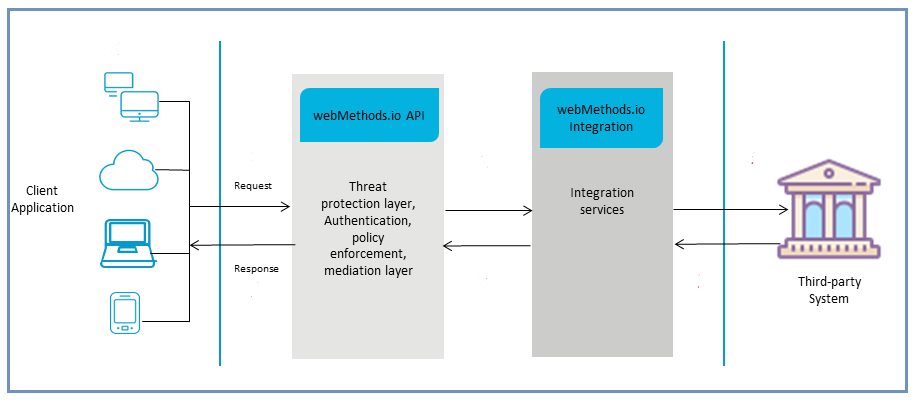Thought Leadership article
A short introduction to WebMethods
Do you know the webMethods solution? To which challenges does it respond and what are its benefits? Vamshikrishna, WebMethods Consultant VISEO in APAC region, tells you everything. Discover his article
What is the solution? What is webMethods?
In a nutshell, webMethods is an Integration & API Management platform. It runs in the cloud, on premises, or in hybrid or multi-cloud environments. The 3 main capabilities of webMethods are:
- webMethods Integration: it is a versatile ESB (Enterprise Service Bus), used to create a communication layer between enterprise applications, SaaS applications, APIs, etc… It can adapt to various enterprises architectures (microservices, unified runtime…), and comes with 300+ ready-to-use connectors to easily be plugged to most of the key software used in companies around the globe.
- webMethods API: it is an API gateway, used to manage the full lifecycle of APIs (versioning, monitoring, security, etc…).
- webMethods B2B: it is a document management system to transmit and track business documents (like purchase orders, invoices and shipping notices) and share it with customers and business partners.
Example below on how the API and Integration are used to connect client systems to third party systems, even though the exchange protocols, file formats or type of architecture might be different :

What challenges does this solution solves? Example of a customer in the retail sector
We are currently working with a client involved in retail. They have been using webMethods products for quite a while. They are using webMethods version 9.x (deployed in 2015) for Application Integration, Business Process Management, and API Management. Other components are also used.
The first challenge it solves is the ability to interconnect systems with different communication protocols. For instance, in the case of the Employee data management (which include internal employees, external employees and store employees), the data come from different sources. It is then is transmitted to 35 different downstream systems, using several type of protocols: FTP, SFTP, SOAP webservices, REST Webservices, AS400 adapters and JDBC notifications.
The second challenge it solves is the ability to monitor processes to transfer documents. For instance, we implemented processes to manage orders, sales, settlements, prices, store transactions, manufacturing and distributions etc.. By using various components webMethods we can integrate with more than 50 applications consuming this data.
Finally, we need to ensure that whenever an application evolves, it is still able to properly consume and send data to the other systems. So we use webMethods deployer and wM Test suite to perform code validation, unit test execution and continuous deployments.
What are the benefits of this technology?
It solves real business problems quite seamlessly. It provides a wide range of solutions. Whether it's cloud or on-premises, it has all the features of Enterprise Applications Integrations solutions. The Integration Server provides a host of built-in features for mappings, transformations and reliable messaging. It has adapters to various applications like JDBC, MQ, SAP, AS400, FileNet, JMS, and various cloud applications. Anyone who has worked with large MNCs know that they have legacy systems that do not necessarily support the latest exchange protocols…
It fits in the DevOps cycle, it can be integrated with various opensource platforms like Jenkins, SonarQube, and Elasticsearch. It is still a complex product, but the platform is very flexible with regular improvements and new features and the support is very good, and very available.
Finally, webMethods has started to shift to cloud, with webMethods.io. As every cloud version, it eliminates the need for customers to perform upgrades, maintenance or fixes as they gain the cloud benefits of cost efficiency, speed, security and flexibility.
You have a project and want to discuss it with our teams?


